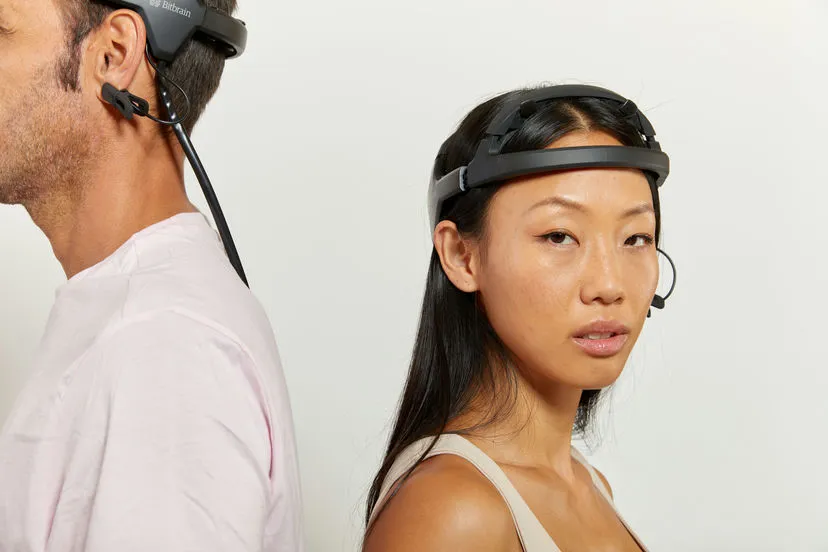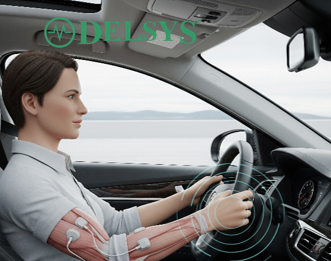Introduction
With rapid advancements in technology, modern designs have now become increasingly human-centered, leveraging tools like eye tracking, EEG, EMG, and fNIRS to capture subconscious user data and create experiences tailored to individual needs. As a designer, a vital question often echoing constantly is –
Will users notice this detail?
Will this interface feel effortless or overwhelming?
But now with these progressive scientific tools designers can back their instincts with data and transform ideas into solutions that are both imaginative and effective. Tidentech’s advanced tools allow designers to peek into the mechanics of attention, emotion and cognition, thus, bridging the gap between artistic vision and user reality. Our every subtle reaction, be it a click, a tap or a smile, offer a host of insights about our choices and therefore these kinds of data sets are very integral in backing design experiences that are impactful.
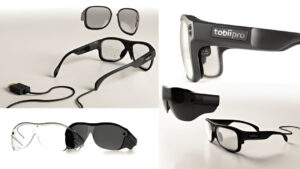
Table of Contents
- The Business Edge of Data-Driven Design
- Eye Tracking: Turning Visual Attention into Competitive Advantage
- EEG: Measuring Cognitive & Emotional Engagement in Design
- EMG: Understanding Muscle Activity and Emotional Micro-Expressions
- fNIRS: Seeing Design Through the Lens of Mental Effort
- Conclusion
- Frequently Asked Questions
The Business Edge of Data-Driven Design
In a business, a good design can offer you a great competitive advantage. With the rapid speed with which trends change in today’s world – design is more than aesthetics, it’s a business differentiator. Poor design choices can frustrate users, weaken brand trust, and lead to lost opportunities. Lets explore how a good, data backed design can offer edge to your business –
- Design as a Driver of User Loyalty: In crowded markets, products and services that feel seamless and intuitive stand out. Good design doesn’t just attract customers, it keeps them coming back.
- Design as a Revenue Multiplier: Every click, glance, or hesitation in a customer journey has a financial impact. Optimizing design with data-driven insights means reducing hesitation points that cost sales and instead maximizing features that encourage engagement.
- Design as Risk Reduction: A shopping app could use eye-tracking to reveal that users consistently overlook the ‘Add to Cart’ button because of its placement. Identifying this issue before launch could allow designers to make quick adjustments which would in turn save both time and resources while ensuring a smoother user experience.
- Design as Differentiation: Many companies offer similar functionality in their products, thus design often becomes the deciding factor. Eye-catching visuals and emotionally resonant branding can make the difference between blending in and standing out, and this is possible with evidence based research data backing the designs.
- Design as Strategic Intelligence: By studying user attention, cognitive load and emotional responses, businesses can align design with strategy. This ensures that every design decision contributes to larger organizational goals, from higher engagement to stronger market positioning.
Eye Tracking: Turning Visual Attention into Competitive Advantage
Tidentech offers a range of Tobii eye-tracking solutions – from the Tobii Pro Glasses 3 for real-world environments to Tobii Pro Spectrum, Fusion, and Spark for lab-based studies, all powered by Tobii Pro Lab software for analysis. These tools capture where users look, for how long and in what sequence, thus, providing powerful insights into visual attention.
Here’s how businesses can use them to gain a competitive edge:
Launching a new mobile app without testing the user interface can lead to costly reworks. With Tobii Pro Spark teams can quickly run usability studies on prototypes. If eye tracking shows that users spend too much time searching for a key feature, the design can be fixed before launch, this would not only save time but also other resources.
In industries like advertising, where milliseconds of attention can decide effectiveness, Tobii Pro Fusion could provide high-quality eye-tracking data to evaluate whether ads capture attention in the intended way or not.
Similarly in a supermarket setting, Tobii Pro Glasses 3 can be used to study how shoppers scan supermarket aisles in real-world contexts. Heatmaps can reveal if a brand’s logo is consistently missed, while a competitor stands out immediately. Thus, using this data and adjusting the design, like using larger font or strategic color contrast, the brand can increase visibility, leading to higher sales.
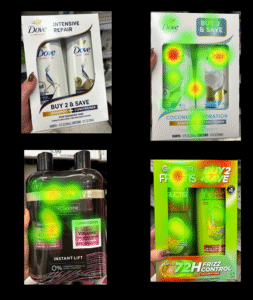
EEG: Measuring Cognitive & Emotional Engagement in Design
Tidentech offers a suite of Bitbrain EEG devices – including Diadem, Air, Hero, etc. These systems measure brain activity to reveal cognitive load, attention, and emotional responses during real-time interactions with products, interfaces, and environments.
Here’s how EEG empowers businesses to transform design into a competitive advantage:
A design that feels effortless keeps users coming back. With Bitbrain Air (a portable wireless EEG) companies can test mobile apps or websites to identify areas of high cognitive load. For example, imagine an online shopping platform where users experience mental strain while checking out due to too many verification steps. By detecting this early, designers can streamline the process, perhaps through introducing one-click payments or simplified authentication, making the experience smoother.
Using Bitbrain Hero, businesses can measure whether a digital ad evokes positive emotional responses or leaves viewers disengaged. A retail brand might compare two ad designs, discovering that one consistently produces stronger neural markers of engagement and thus select an ad backed with neural evidence for their campaign.
In the gaming industry, a game developer using Bitbrain Diadem could detect when players feel most immersed versus moments of frustration. Adjusting game mechanics accordingly could thus ensure a smoother, more captivating experience and help the product stand out in a market where new products are launched everyday.
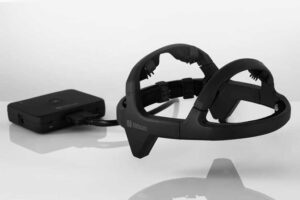
EMG: Understanding Muscle Activity and Emotional Micro-Expressions
Tidentech provides Delsys EMG systems, which measure subtle muscle activity ranging from the face (revealing micro-expressions tied to emotion) to the body (showing physical effort or strain). This makes EMG a powerful tool for evaluating both emotional resonance and physical usability in design.
Here’s how EMG translates into business advantage:
If a product feels uncomfortable to use, customers won’t return to it. By using Delsys EMG sensors on hand and wrist muscles, designers can test the usability of handheld devices like game controllers or wearables.
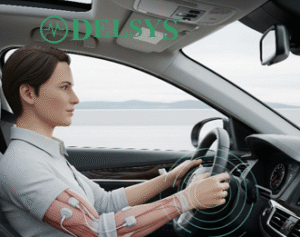
Using Delsys EMG, an office furniture company could evaluate muscle strain in chairs or desks. If EMG data shows consistent neck or shoulder strain, designers can adjust dimensions before mass production
In fashion and apparel design, subtle EMG signals from facial muscles when trying on clothing or accessories can reveal subconscious emotional reactions. Fashion brands can use these insights in campaign visuals, store layout or garment designing to maximize positive emotional engagement and increase sales.
fNIRS: Seeing Design Through the Lens of Mental Effort
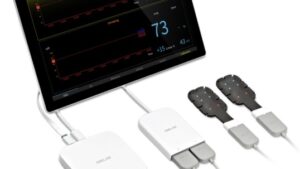
Tidentech distributes OBELAB fNIRS systems, which measure changes in blood oxygenation in the brain, capturing how much cognitive effort a user is investing at a given moment. This allows designers to see if their creations are intuitive and engaging or mentally exhausting.
Here’s how fNIRS contributes to design as a competitive advantage:
Brands can use OBELAB NIRSIT Lite to evaluate cognitive load when users watch ads or consume digital content. Ads or campaigns that engage attention without overwhelming the brain are more effective. This helps brands select campaigns that have maximum impact.
In spatial and architectural design, fNIRS can measure cognitive load when people navigate airports, malls or hospitals. If brain strain increases when signs are unclear, architects can redesign visual cues and pathways for more intuitive navigation.
When designs lower cognitive load, through elements like cleaner typography and clearer color contrasts, they not only enhance recognition but also build greater customer trust. For example, a beverage company could test multiple label prototypes and discover that consumers process a simplified design with bold color blocking much faster than a cluttered one. By adopting the clearer version, the brand ensures quicker recognition in a shelf, thus resulting in stronger recall and purchase intent.
Conclusion
Tools like Eye Trackers (Tobii Pro range), EEG systems (Bitbrain Diadem), EMG sensors (Delsys) and fNIRS solutions (OBELAB NIRSIT series) empower designers to move beyond guesswork and surface-level feedback. Instead of relying only on what users say, businesses can now see how people truly think, feel and react to their products and platforms.
Eye tracking shows where attention lingers, EEG captures the flow of cognitive and emotional states, EMG picks up subtle expressions and ergonomic strains while fNIRS measures hidden layers of mental workload. Together, these tools create a powerful foundation for truly human-centered designs.
And for businesses, good design is no longer just about usability. It’s about crafting products people love to use and experiences that rise above the noise in a crowded market. Imagine spotting points of friction before launch, or knowing exactly what puts a customer at ease with your app or product. By weaving neuroscience insights into the design process, companies cut down on risks, speed up development and in fact replace guesswork with clarity.
With Tidentech’s range of tools, design transforms from being simply creative into a real strategic advantage, one that helps businesses connect with people in ways that feel natural, intuitive, and lasting.
Frequently Asked Questions
1. What is data-driven design and why is it important?
Data-driven design refers to using objective evidence from tools like eye tracking, EEG, EMG, and fNIRS to inform and optimize design decisions, moving beyond instincts or surface-level feedback. It’s important because it helps in ensuring designs are human-centered, effective, and tailored to subconscious user reactions. In business, it provides a competitive edge by offering strategic intelligence.
2. How does eye tracking contribute to design and business advantage?
Eye tracking captures where users look, for how long, and in what sequence, providing insights into visual attention. Tidentech offers Tobii solutions like Tobii Pro Glasses 3 for real-world studies, and Tobii Pro Spectrum, Fusion, and Spark for lab-based analysis, all powered by Tobii Pro Lab software. Businesses can use it to test app interfaces (e.g., spotting overlooked buttons), evaluate ad effectiveness, or optimize retail displays (e.g., improving logo visibility in supermarkets via heatmaps), leading to quicker fixes, higher sales, and reduced rework costs.
3. What role does EEG play in design?
EEG measures brain activity to reveal cognitive load, attention, and emotional responses during interactions. Tidentech provides Bitbrain devices like Diadem, Air, and Hero. It helps identify high cognitive strain in apps or websites (e.g., simplifying checkout processes), select engaging ads based on neural markers, or refine game mechanics to reduce frustration and boost immersion. This transforms design into a competitive advantage by creating effortless, emotionally resonant experiences that encourage repeat use.
4. How can EMG be used to understand emotional and physical responses in design?
EMG measures subtle muscle activity, including facial micro-expressions for emotions and body strain for usability. Tidentech distributes Delsys EMG systems. Applications include testing handheld devices for comfort (e.g., game controllers), evaluating office furniture for muscle strain (e.g., adjusting chair dimensions), or capturing emotional reactions in fashion design to optimize campaigns or layouts. This ensures products are ergonomically sound and emotionally engaging, reducing user discomfort and boosting sales.
5. What is fNIRS and how does it help assess mental effort in design?
fNIRS measures changes in brain blood oxygenation to gauge cognitive effort, helping determine if designs are intuitive or exhausting. Tidentech offers OBELAB systems like NIRSIT Lite. It benefits businesses by evaluating ad cognitive load for maximum impact, improving spatial designs (e.g., clearer signage in airports or malls), or testing product labels for quicker recognition (e.g., simplified beverage labels). This lowers mental workload, enhances user trust, and improves recall and purchase intent.
6. Can these tools be used in real-world environments, or are they limited to labs?
Many of Tidentech’s tools support both real-world and lab-based studies. For example, Tobii Pro Glasses 3 enables eye tracking in natural settings like supermarkets, Bitbrain Diadem is a portable wireless EEG for mobile testing, and Delsys EMG sensors can monitor muscle activity during everyday use of products like wearables. This flexibility allows businesses to gather authentic insights from real interactions, not just controlled environments
7. Which industries can benefit from these neuroscientific design tools?
The blog highlights applications in various industries, including app and website design (e.g., mobile apps, online shopping), advertising and marketing (e.g., ad evaluation), retail and supermarkets (e.g., shelf visibility), gaming (e.g., immersion testing), office furniture and ergonomics, fashion and apparel (e.g., emotional reactions), architecture and spatial design (e.g., navigation in malls or airports), and product packaging (e.g., beverage labels). Any sector focused on user experience, from tech to consumer goods, can gain a competitive edge.
If you’d like to dive deeper into any particular study or point, feel free to ask us at parag@tidentech.com or tidentech@gmail.com or call us on +91 9987442274.






